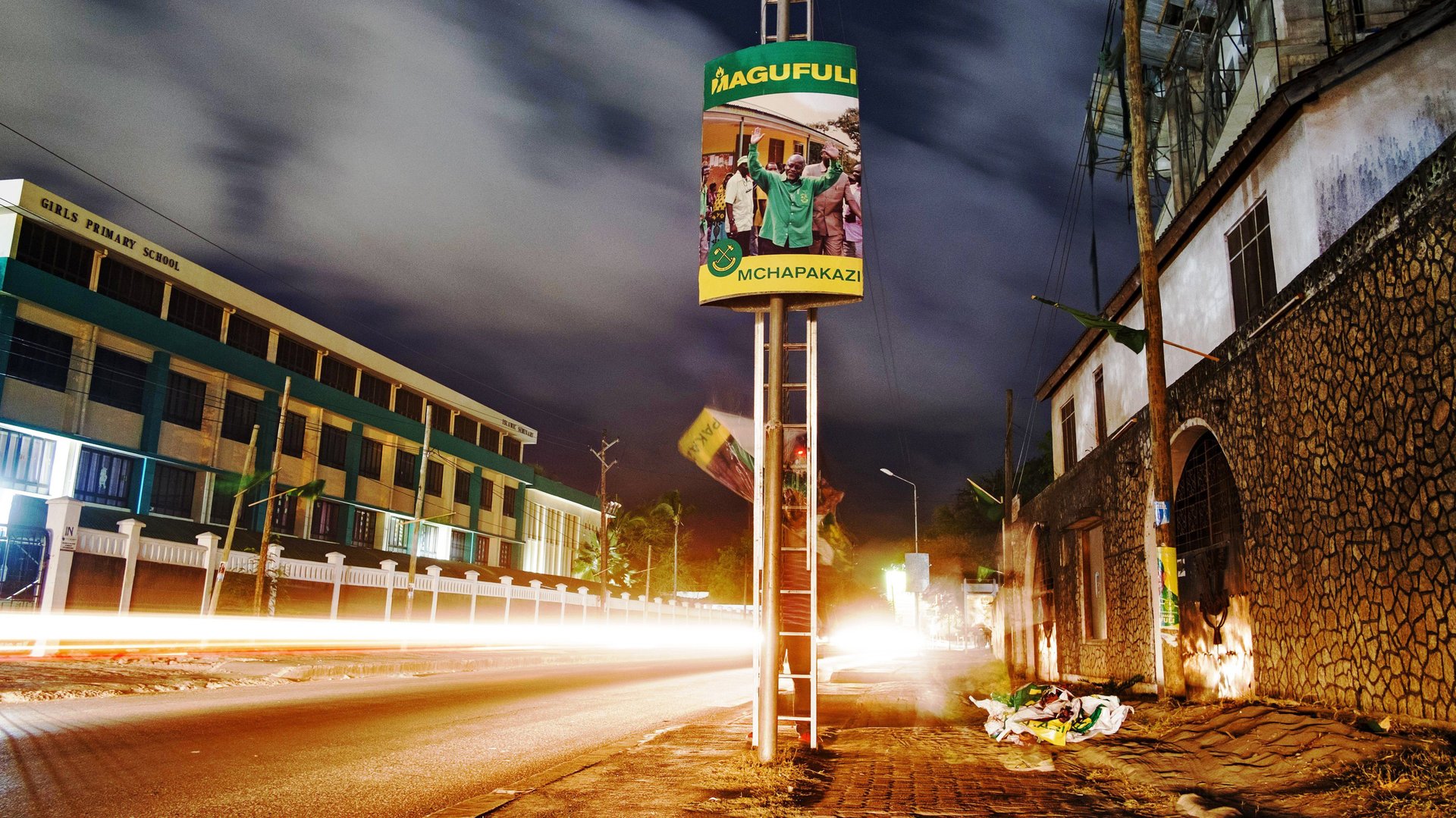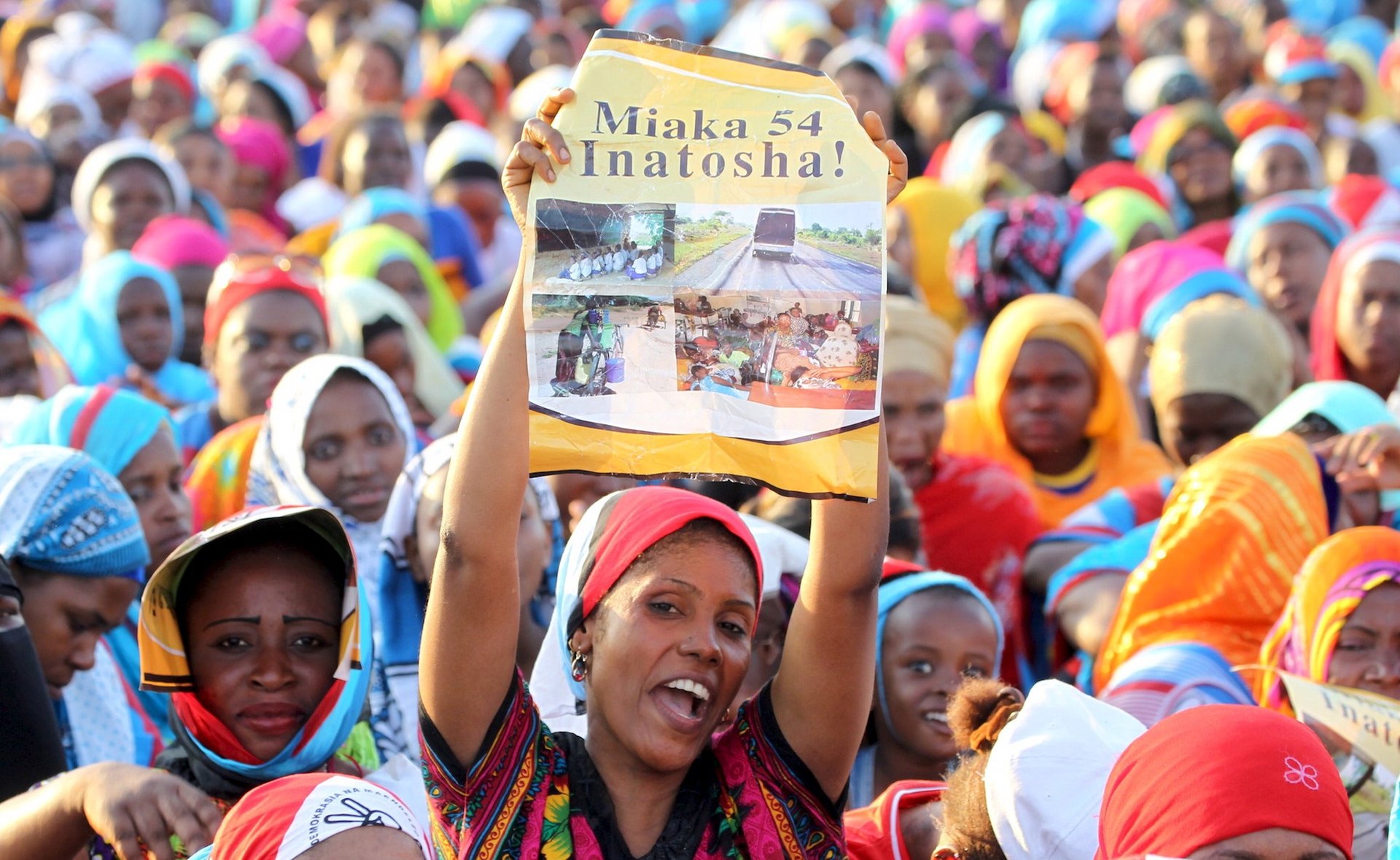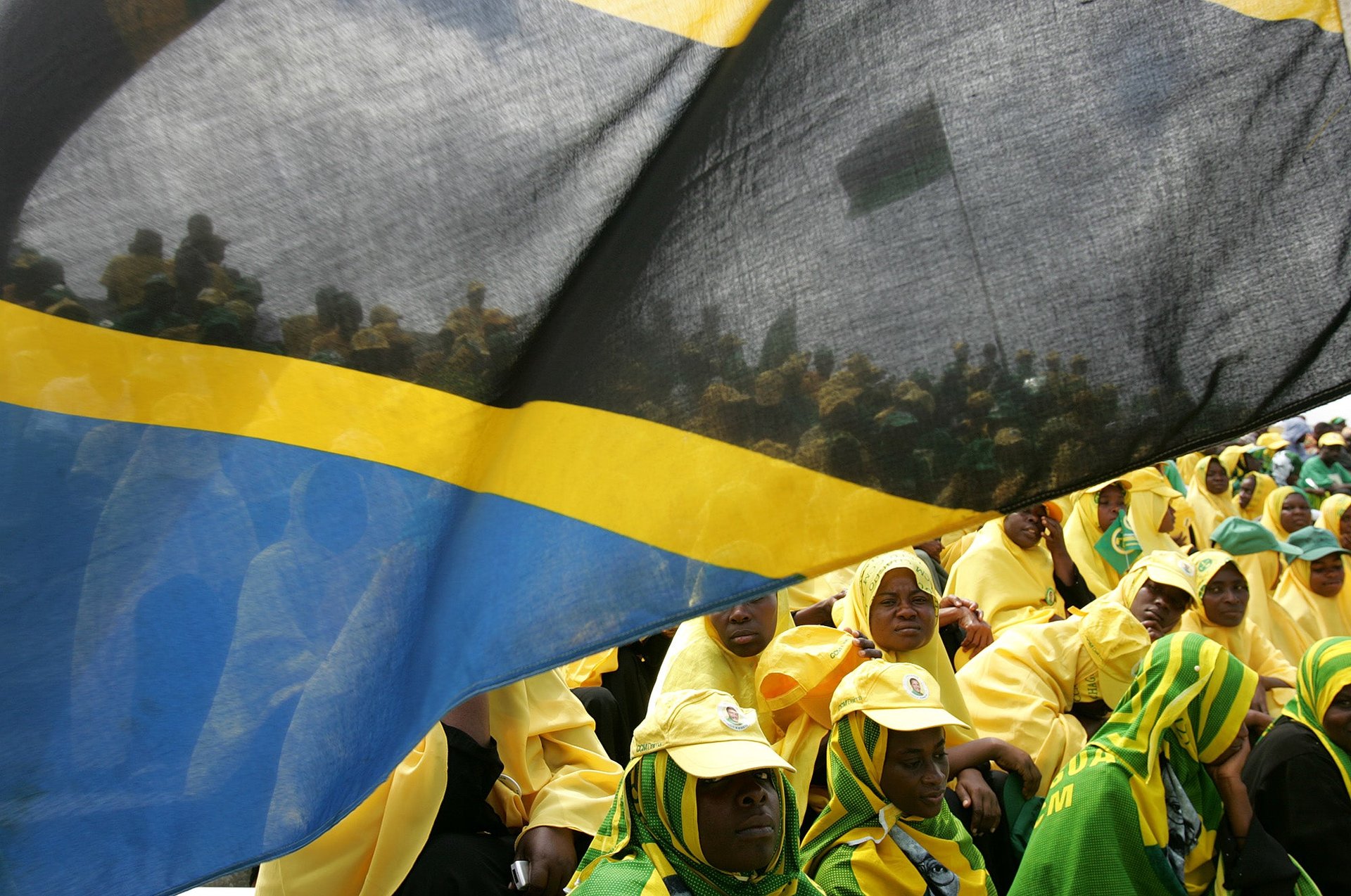What to watch for in the most competitive election in Tanzanian history
It has been a barn-burner of an election campaign in Tanzania. We’ve seen high profile cross-party defections, dueling op-eds in the foreign press, mudslinging on Whatsapp, push-ups on the campaign trail, and much more. It has been the most vibrant campaign season since the onset of multiparty democracy in 1995. All this comes to an end on Sunday (Oct. 25), as voters will elect new leaders to govern the country for the next five years.


It has been a barn-burner of an election campaign in Tanzania. We’ve seen high profile cross-party defections, dueling op-eds in the foreign press, mudslinging on Whatsapp, push-ups on the campaign trail, and much more. It has been the most vibrant campaign season since the onset of multiparty democracy in 1995. All this comes to an end on Sunday (Oct. 25), as voters will elect new leaders to govern the country for the next five years.
The question for the electorate is whether to give the ruling party Chama Cha Mapinduzi (CCM) another term in office or vote in the opposition for the first time in the country’s history. Both sides are promising change (paywall). CCM’s presidential candidate, John Magufuli, a works minister in the outgoing administration, has positioned himself as someone who can get things done.
His rival, Edward Lowassa, is a former CCM prime minister who defected to the main opposition party, Chadema, in August. Running under the rubric of the opposition coalition Ukawa, Lowassa is betting that the electorate will see his experience as what’s needed to propel Tanzania into the future. Both gentlemen have barnstormed the country, attracting huge crowds.
So on that note, here are a few things to watch out for after polls close on Sunday.
Turnout will be key
In 2010, then opposition candidate Wilbroad Slaa attracted massive crowds on the campaign trail. But on election day, those voters failed to show up. At 43%, turnout was the lowest in the country’s history. Slaa garnered a mere 26% of the vote, leading to the easy re-election of president Jakaya Kikwete.

This year, Lowassa, like Slaa, is seeing huge numbers of people attend his rallies. So the question is whether they will vote. Of eligible voters, 93% have registered, according to data from the National Electoral Commission (NEC). But a poll last month (pdf, p. 5) showed only 57% of voters knew when election day was. So clearly, for both parties, turnout will be key. CCM, over the years, has shown that it can get its voters out. The results will depend on whether the opposition can match it this time around.
Potential for violence
After Mount Kilimanjaro and the Serengeti, the other thing Tanzania is known for worldwide is its relative political stability. In a region where many elections are marred by violence, east Africa’s second-largest economy has always stood out as a model. But a tense election campaign has some worried that this may be about to change.
The opposition is suggesting that CCM is planning to rig the vote. If the election is close and results take time to come out, that suspicion could take hold and spell trouble. But this is unlikely, especially in the mainland, where historically, things have tended to proceed (pdf) pretty smoothly.

In the semi-autonomous archipelago of Zanzibar, however, it’s less clear what will happen. Over the years, elections there have typically been 50-50. And there is a history of post-election violence. Five years ago, that risk abated, after an agreement to form a coalition government ensured peaceful polls. This year, how things turn out will hinge on whether whoever loses the election accepts the result. The candidate of the Civic United Front (CUF), the main opposition party in Zanzibar, has indicated that if they deem foul play by CCM, he won’t stop his supporters from taking to the streets.
Will the opposition coalition hold?
The opposition’s decision to run as a coalition for this election is the main reason why the campaign has been so competitive. Nevertheless, there are signs that the coalition is fraying. First, Slaa, who ran for president five years ago for Chadema, endorsed the ruling party’s candidate. Then came reports of squabbling inside the coalition.
Moreover, voters themselves seem uncertain about how the coalition works. A poll showed many believe Ukawa, the coalition, is itself a registered political party, with 57% expecting to see Ukawa (pdf, p.11) candidates on the ballot. On election day, however, they won’t find Ukawa’s name, only those of individual parties. That might cost the coalition votes.
CCM is likely to retain the presidency
Despite the tough campaign, CCM’s candidate, Magufuli, should still win. Ahmed Salim, an analyst with Teneo Intelligence, a consulting firm, in a note to investors, wrote that he expects Magufuli to get 58%-65% of the vote. Polls suggest that he has the support of about 60% of the electorate. While it’s not impossible for Lowassa to still emerge victorious, he will need to pull off a 17.5-point swing since the last election, when Slaa got 26%, to secure the presidency. That’s unlikely in this election cycle.
Less clear is what will happen at the parliamentary level. Lowassa’s presence on the top of the ticket and his sizable personal war chest had the opposition hoping that it will help them expand the electoral map. In 2010, Chadema won 23 seats out of the 239 in contention. If they can increase that number to 80, it would give the party more clout and change the nature of Tanzania’s governance. This is, perhaps, its main goal.